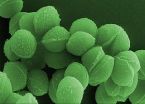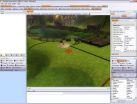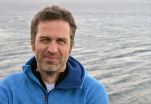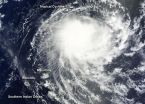(Press-News.org) If we believe a negative trait we possess is linked to a related positive characteristic, we will be more productive in that domain, New York University researchers have found. Their study, which appears in the Journal of Experimental Social Psychology, establishes a novel "silver lining theory": negative attributes can produce positive results.
"People know that a weakness can be also be a strength, but these results show that if we actually believe it, we can use these beliefs to our advantage," says Alexandra Wesnousky, an NYU doctoral candidate and the study's lead author.
The paper may be downloaded here: http://bit.ly/1vwGVHw.
The researchers conducted a series of experiments in order to assess the impact of these "silver lining" beliefs. In an initial study, subjects filled out a survey that assessed their personalities by asking the extent to which negative traits they believed they held could also be seen as positive (e.g., conceited vs. high self-esteem). The majority of individuals endorsed a silver lining theory: when prompted with a negative attribute, most participants readily generated a positive associated trait.
In a second experiment, with a new set of subjects, the researchers focused on the specific silver lining theory that impulsivity is related to creativity. Notably, more than half of participants in a pilot survey saw a connection between "impulsivity" (negative) and "creativity" (positive). In the experiment, subjects took a commonly used personality survey, the Barrett Impulsiveness Scale, which is used to measure impulsiveness. However, in order to ensure the randomness of the study samples, two sets of groups were told they were "impulsive" and two other groups were told they were "not impulsive."
Next, the four groups of subjects read one of two mock newspaper articles: one that described scientific findings showing an association between impulsivity and creativity and another outlining scientific findings that refuted such a link. In this part of the experiment, one "impulsive" group read the story linking impulsivity and creativity and the other "impulsive" group read the story refuting this connection. The two "non-impulsive" groups were also split in this fashion.
In order to test the impact of their beliefs, as influenced by the news article, the subjects then engaged in a creativity task in which they were presented with an object and instructed to generate as many creative uses for it as possible in three minutes.
Their results showed that the impulsive group that read the story linking impulsivity to creativity came up with significantly more creative uses for the object than did the impulsive group that read the story disproving this relationship. Notably, in the non-impulsive groups, the results were the opposite: those who read the story refuting the connection with creativity came up with more uses for the object than did those who read the story establishing this linkage, though this was not significant.
INFORMATION:
The study's other authors included Gabriele Oettingen, a professor in NYU's Department of Psychology and the author of the recently released Rethinking Positive Thinking, and Peter Gollwitzer, a professor in NYU's Department of Psychology.
The work was funded by a National Science Foundation Graduate Research Fellowship (DGE 1342536) and by the German Research Foundation (OE237/10-1).
This news release is available in German. Jülich, 27 November 2014 - The resolution of scanning tunnelling microscopes can be improved dramatically by attaching small molecules or atoms to their tip. The resulting images were the first to show the geometric structure of molecules and have generated a lot of interest among scientists over the last few years. Scientists from Forschungszentrum Jülich and the Academy of Sciences of the Czech Republic in Prague have now used computer simulations to gain deeper insights into the physics of these new imaging techniques. ...
This news release is available in German.
Genome engineering with the RNA-guided CRISPR-Cas9 system in animals and plants is changing biology. It is easier to use and more efficient than other genetic engineering tools, thus it is already being applied in laboratories all over the world just a few years after its discovery. This rapid adoption and the history of the system are the core topics of a review published in the renowned journal Science. The review was written by the discoverers of the system Prof. Emmanuelle Charpentier, who works at the Helmholtz Centre ...
Teenage boys are perhaps more known for playing computer games but girls are better at making them, a University of Sussex study has found.
Researchers in the University's Informatics department asked pupils at a secondary school to design and program their own computer game using a new visual programming language that shows pupils the computer programs they have written in plain English.
Dr Kate Howland and Dr Judith Good found that the girls in the classroom wrote more complex programs in their games than the boys and also learnt more about coding compared to the ...
"We have not seen an ice free period in the Arctic Ocean for 2,6 million years. However, we may see it in our lifetime." says marine geologist Jochen Knies. In an international collaborative project, Knies has studied the historic emergence of the ice in the Arctic Ocean. The results are published in Nature Communications.
The extent of sea ice cover in Arctic was much less than it is today between four and five million years ago. The maximum winter extent did not reaching its current location until around 2.6 million years ago. This new knowledge can now be used to ...
This news release is available in German. FRANKFURT The chances of patients with Philadelphia chromosome-positive leukaemia (Ph+) being cured has greatly increased in recent years. Nevertheless, a high percentage of patients have developed resistance to available medication. But now, haematologists from Frankfurt, working with a Russian pharmaceutical company, have developed a new active substance that effectively combats the most aggressive forms of Philadelphia chromosome-positive leukaemia, both in vitro and in vivo. They have reported this in the current edition ...
Tropical Depression 21W crossed the Philippines and moved into the South China Sea where warm waters helped strengthen the storm into Tropical Storm Sinlaku. NASA's Aqua satellite passed over the storm and captured an image that showed it appeared elongated.
Despite the strengthening of Tropical Depression 21W into a tropical storm on Nov. 28, it appeared elongated from southwest to northeast on visible imagery taken by the Moderate Resolution Imaging Spectroradiometer (MODIS) instrument that flies aboard Aqua. The MODIS image also showed that the strongest thunderstorms ...
NASA's Terra satellite passed over Tropical Cyclone 02S after it formed in the Southern Indian Ocean on Nov. 28. An image from Terra showed that the new tropical storm is close to Mauritius and Reunion Islands.
The Moderate Resolution Imaging Spectroradiometer or MODIS instrument aboard NASA's Terra satellite captured a visible image of newborn Tropical Cyclone 02S northeast of the islands of Mauritius and Reunion. The MODIS image showed that thunderstorms were mostly west of the low-level center of circulation and bands of thunderstorms were wrapping into the center. ...
This news release is available in German. Humans don't like being alone, and their genes are no different. Together we are stronger, and the two versions of a gene - one from each parent - need each other. Scientists at the Max Planck Institute for Molecular Genetics in Berlin have analysed the genetic makeup of several hundred people and decoded the genetic information on the two sets of chromosomes separately. In this relatively small group alone they found millions of different gene forms. The results also show that genetic mutations do not occur randomly in the ...
Two physicists from the University of Warwick have taken to the kitchen to explain the complexity surrounding what they say is one of the last big mysteries in polymer physics.
As a way of demonstrating the complicated shapes that ring-shaped polymers can adopt, the researchers have created a brand new type of ring-shaped pasta, dubbed "anelloni" (anello being the Italian word for "ring"), which they've exclusively unveiled in this month's Physics World.
With just 2 eggs and 200 g of plain flour, Davide Michieletto and Matthew S Turner have created large loops of pasta ...
Peter Friedl, M.D., Ph.D., professor of genitourinary medical oncology at The University of Texas MD Anderson Cancer Center, has received one of Italy's top scientific awards for his work in imaging and cancer growth, metastasis and therapy response.
Friedl was named a recipient of the 13th annual City of Florence Prize in Molecular Sciences. Previous recipients include such scientific luminaries as AIDS research pioneer Robert C. Gallo. M.D., human genome sequencing expert J. Craig Venter, Ph.D., and Nobel laureates Robert Hubert, Ph.D. and Ada Yonath, Ph.D. Friedl received ...







